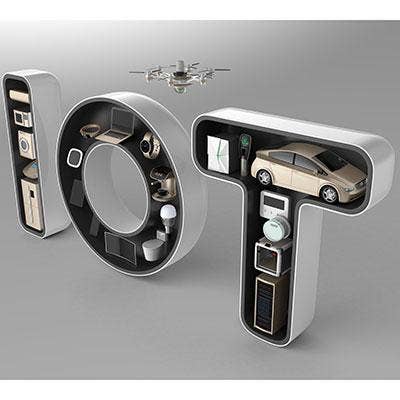IoTConnex CIO Panel: Customers Sound Off On How They're Budgeting IoT And What They Need From The Channel

IoT: The Customer's Perspective
There's been plenty of noise around the Internet of Things from vendors, market research firms, and channel partners – but what do customers think about the opportunities and challenges surrounding IoT projects?
At Wednesday's IoTConnex virtual event, hosted by CRN parent The Channel Company, Robert Demarzo, SVP of Event and Content Strategy at The Channel Company sat down with two CIOs to hear their perspectives. These IoT customers included Tammy Barr, VP/IS and CIO at Continental Mills, a Seattle, Wash.-based food products company; and Nick Dell, IT manager at Midway Products Group, a Monroe, Mich.-based automotive and stamping operations company.
Following are excerpts from the conversation with these two customers during the CIO panel.

Can you start the discussion with a brief overview of your company's view on IoT?
Tammy Barr: We've actually been doing what's essentially considered IoT for a long time, before IoT was cool and a new popular idea. A lot of our plant and shop floor equipment has historically had some sensors that out put data. What's changing now is that we are getting much more into data collection mode, so we've had machines with the capability of producing a lot of data and information bits about how the machine is running, but we haven't really captured and created any insights out of that data.
It's really a company push to gather that information, and do some reporting on it so we can get some insights to help us run our facilities better. We have a lot of joint projects going on right now, and it's definitely being driven by the business units with heavy involvement from IT – we are partnering with them to bring the software and solutions together with the data outputs and create some actionable insights.
Nick Dell: We're in auto parts manufacturing… There's been this data out there that's been collected, but we've never brought it to the front office as easily as we can now, and that's really where the initiatives are right now. We want to take IoT and to take the data and bring it to one area to help us make quick business decisions.

When you're creating a budget, how does IoT and emerging technology like IoT fit into your planning?
Tammy Barr: We really divide the funding for these projects into two parts – we don't necessarily say we're funding IoT projects for the sake of technology, but we say we're funding business projects and trying to develop business solutions. For this type of a system, the plant and the operational side would fund for the manufacturing equipment, and the equipment with the sensors and output. If our packaging lines need additional sensors or data feeds that comes from their budget. Where we come in is on the software side, so software consulting and the solutions to do something with that information.
Nick Dell: We're exactly the same when it comes to the manufacturing and business sides… We go to both sides and say anytime you have these initiatives get us involved so we can budget for the software and hardware or the infrastructure to support it. Tammy's much further along on this process than we are, we're just getting into it, so as long as the budget has a great payback on the operational side, that's really where it comes out to prove that the money will be available for it.

When it comes to IoT, what do you see as the end goal?
Tammy Barr: We don't have strict requirements as far as return [on investment], but we do need to show a net positive over time – that the more hard dollars it is the better it is. But the efficiencies and the abilities for us to scale is huge, because over time we're trying to scale and be flexible and meet future business requirements when we don't even know what they are yet.
Nick Dell: Mainly the payback the company looks for … they want payback right away within one year of what they're investing in, which is really aggressive. Efficiency is always there, every day they're reporting efficiencies, and all those things drive the bottom line.

Is there any specific area where you're seeing IoT deployed successfully?
Tammy Barr: We're working on one project with a software vendor that is providing both the software that offers the data capture and analytics [tools], and builds the dashboards and presents the value we get from the equipment. We fund any business project based on business value – we have to prove the business value of any solution.
Nick Dell: We're steel forming so there's lots of things that go into that that get used… right now we're really concentrated on efficiency because we're still in the infancy stage of IoT. Over the past few years we've been collecting data on devices and it's just now getting it to the platform, where we can collect that data and start reporting on it.
We see that going to that idea of artificial intelligence… to where we're looking at a press [machine], and can see how much oil is going there, what the temperature settings are, so we can adjust the oil and check its cleanliness. There's all these things that can help make things more efficient. If a $10 million press goes down, sometimes it costs $200,000 to fix. So if you can prevent that with predictive analytics it can really have a huge payback.

Talk about security, are IOT and OT partners understanding what you're up against in that regard?
Tammy Barr: The security is always an issue and it will continue to be an issue, and I think most of our suppliers get that. I know we spend a lot of time reviewing the security practices and guarantees that any of our suppliers have and making sure we have safeguards in place. I think the other place where providers really add value is helping us think outside the box a little bit. There's a lot of really cool new functionality in IoT we can start taking advantage of and those are the things I'm really excited about.
Nick Dell: I think they're going pretty well, we haven't involved too many partners yet, we're in the opening stage of that – but security is a huge concern for us especially in the manufacturing side. We typically have the network separated in our environment because the legacy equipment is so old... having a secure environment that's locked down, with limited holes and places to trade information is very important.